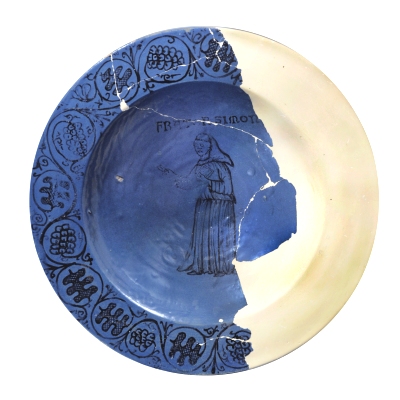A small, precious exhibition tells in a new and original way the events with which Goths, Lombards, Byzantines and new centers of power (castles, monasteries, churches and municipalities) have written the history of Emilia-Romagna in the transition from the ancient world to the modern age
MEDIOEVO SVELATO
Storie dell'Emilia-Romagna attraverso l'archeologia
 Saturday,
17 February 2018 - Sunday, 17 June 2018
Saturday,
17 February 2018 - Sunday, 17 June 2018
Museo Civico Medievale
Via Manzoni 4
Bologna
info +39 051 2193916
museiarteantica@comune.bologna.it
www.museibologna.it/arteantica
Tuesday to Friday: ore 9 > 18.30 / 9 am > 6.30
pm
Saturday, Sunday and Holidays: ore 10 > 18.30 / 10 am > 6.30 pm
from March 1> Tuesday to Sunday: 9 am > 6.30 pm
closed on Monday
Full fee € 5 | reduced fee € 3
Free admission for Card Musei Metropolitani Bologna holders and on the first
Sunday of every month
Emilia-Romagna region was among the first Italian regions in which
medieval archaeology started to develop and today, after forty years of
research, protection and hands-on operational work led by the different
archaeological Superintendences, we have a great deal of data, information
and knowledge.
As a matter of fact the exhibition will take us to extraordinary cities like
Ravenna, but also to places with a highly-valued historical and symbolic
meaning, like Canossa or Nonantola, without forgetting ordinary life issues,
community life economic spaces, social aggregation ways, power relations
represented through very little known places, sometimes almost unheard-of by
a wider public.
The exhibition is made of six sections punctuating the most meaningful
moments in the history of settlements in this region, retracing the stories
of the communities that lived and acted here.
For instance the history of town development unfolds through three sections:
the first one describes the collapse and transformation of ancient towns.
The fourth, focuses on new towns through the case of Comacchio, a large
early medieval trading centre risen from scratch; then the sixth and last
section, closes the loop by dealing with the medieval ‘renaissance’ towns,
those of the Communes, of which Bologna was one of the most important ones.
On the one hand, in the area of the Sala Borsa are displayed ancient home
and tableware items including ceramics imported from Venetian workshops and
from Syria and, on the other, the extraordinary dishes embedded on the
facade of the Church of Saint Jacob, are a wonderful example of one of the
oldest Italian majolica ware productions.

One of the extraordinary dishes embedded on the facade of the Church of
Saint Jacob, wonderful example of one of the oldest Italian majolica ware
productions
Rural settlements are displayed in two sections: the second one
illustrating the collapse of the ancient rural system through the evolution
of its landmark model: the farm/country house.
The fifth section features the facilities that replaced the early medieval
rural fabric relaunching it with new consistency and vigour: small holding
farms, villages, castles, and cloisters.
The social, religious and cultural history appears on the background in all
sections but most of all in the third one in which the shift from Antiquity
to the Middle Ages is developed through the impact generated by the arrival
of new peoples (the Goths and the Longobards). The tangible remains of
burial customs, namely the revival of the, sometimes eccentric, funeral
dressing and funeral set laying, perfectly epitomize, even symbolically,
this transition.
The exhibition opening in Bologna aims at using facts to tell the story of
artefacts (most of them are usually stored in warehouses and not on display
for the public) to show how medieval archaeology can contribute to the
development of a valuable heritage of shared knowledge, ideas and values.
Editing by Carla Conti